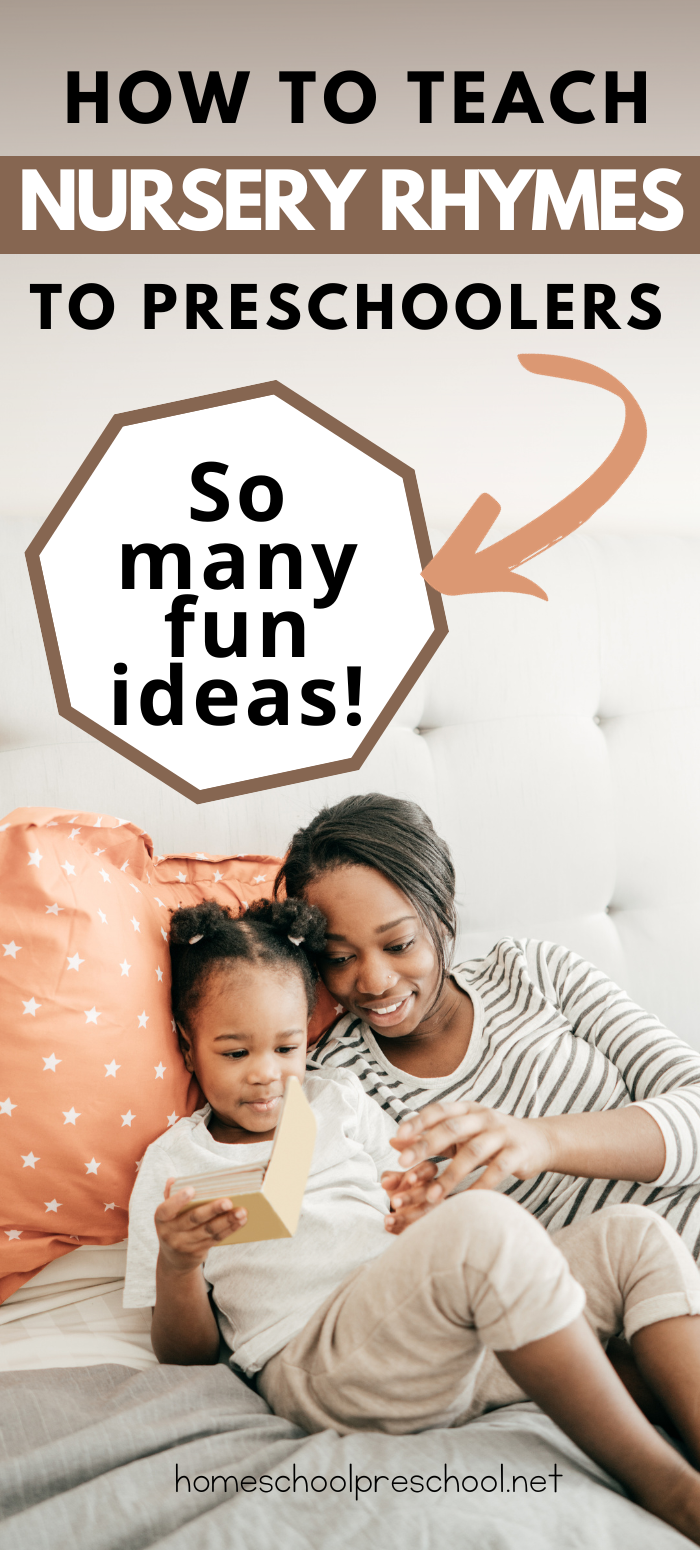How to Teach Nursery Rhymes
Ever wondered how to teach nursery rhymes in the most fun and interactive way? Well, you’re in the right place!
Nursery rhymes are a time-honored tradition in early childhood education, playing a crucial role in language acquisition and cognitive development.
They’re often a child’s first encounter with the rhythm, rhyme, and structure of language. But how can we make this learning experience even more engaging?
Enter nursery rhymes activities! Incorporating activities with nursery rhymes can turn a simple singing session into an interactive, multi-sensory learning experience.
Read on to explore some exciting activities that you can easily incorporate into your nursery rhyme teaching sessions!
Nursery Rhymes in Early Childhood Education
Nursery rhymes play an integral part in early childhood education. These simple verses serve as an introductory platform for children to discover the joys of language and learning.
Moreover, they instill a lifelong love of words, sparking creativity, and fostering intellectual curiosity. They’re more than just catchy tunes; they’re an essential part of building a strong educational foundation in a child’s early years.
How to Teach Nursery Rhymes
Imagine the delight on children’s faces as they act out ‘Itsy Bitsy Spider‘ or sequence the events in ‘Humpty Dumpty‘. Bringing in activities can make nursery rhyme sessions energetic, interactive, and memorable.
Whether you incorporate props, craft projects, or even dance routines into your sessions, you’re sure to see children’s engagement and excitement levels soar.
It’s all about transforming learning into an enjoyable journey of discovery!

Activity-Based Nursery Rhyme Learning
Activity-based nursery rhyme learning holds significant benefits. First, it addresses varying learning styles. Some children are kinesthetic learners; they learn best by doing. Incorporating activities allows these children to grasp the nursery rhymes more effectively.
Secondly, it promotes better memory retention. Making physical movements or crafting a representation of a rhyme makes it easier for children to remember. The rhyme is no longer just lyrics but also an experience that they can recall.
Finally, it boosts social skills. Acting out a nursery rhyme or working on a craft project together encourages teamwork and communication among children. It provides an opportunity for them to interact, cooperate and build relationships with their peers.
The effectiveness of activity-based nursery rhyme learning is backed by numerous studies. Research indicates that multi-sensory learning experiences, like those provided by activity-based nursery rhymes, lead to better understanding, recall, and application of knowledge. So, integrating activities into nursery rhyme sessions can indeed turn them into powerful learning tools!

Activities to Incorporate with Nursery Rhymes
Rhyme Puppets: Rhyme Puppets breathe life into nursery rhymes. It’s a fun, hands-on activity that combines art and drama. The purpose is to promote creativity and imaginative play.
Children make their own puppets related to a specific nursery rhyme. Once the puppets are crafted, they can use them to act out the nursery rhyme, encouraging role-play and storytelling.
- Itsy Bitsy Spider Puppet from Lalymom
- DIY Nursery Rhyme Puppets from My Baba
- This Little Piggy Puppets from Playdough to Plato
Rhyme and Dance: Rhyme and Dance combines physical activity with learning. Children learn a simple dance routine or movement sequence for a specific nursery rhyme. This serves to improve motor skills, rhythm and aids in better memory retention.
Choose a nursery rhyme, demonstrate the dance or movement routine. The children then follow along, singing the rhyme as they dance. It’s interactive, energetic, and a lot of fun!
Interactive Storytelling: This activity transforms nursery rhymes into a captivating story. With props, voice modulation, and a bit of drama, it turns passive listening into an engaging activity. The purpose is to enhance listening skills, boost imagination, and foster a love for storytelling.
Read out a nursery rhyme as if it were a story, using different voices for characters and dramatic gestures. Encourage children to join in with sound effects, actions, and role-play. This makes the nursery rhyme come alive, and the children become a part of the story!

Tips for Successfully Implementing Nursery Rhyme Activities
When implementing nursery rhyme activities, there are several strategies to enhance your success.
Preparation is Key: Set up all the required materials before starting the activity. Having everything ready beforehand saves time and keeps the children engaged.
Simplicity Works Best: Activities should be simple and age-appropriate. Complicated projects or dance routines might overwhelm the children, reducing their interest and engagement.
Repetition is Important: Repeating the activities multiple times can aid in better memory retention. Don’t rush to introduce a new nursery rhyme or activity. Instead, repeat the same one until the children are familiar with it.
Patience and Encouragement: Children learn at different paces. Some might pick up the activity quickly, while others may need more time. Be patient, provide encouragement, and give everyone a chance to participate.
Incorporate Variety: Keep the interest levels high by incorporating a variety of activities. Rotate between puppet making, dancing, and interactive storytelling. This variety will keep the children excited and looking forward to the next session.
Build a Positive Environment: Lastly, create a positive and fun learning environment. Praise the children’s efforts, encourage creativity, and ensure all children feel included and valued. A positive experience will make the children more receptive to learning and participating in future activities.
In conclusion, nursery rhymes play a fundamental role in child development, cultivating a love for language and sparking early intellectual curiosity. By implementing activity-based learning within the nursery rhyme sessions, we can elevate these benefits, making the process more effective and engaging.
Activities such as Rhyme Puppets, Rhyme and Dance, and Interactive Storytelling not only make learning fun, but also cater to different learning styles, promote memory retention, and boost social skills.
Remember, the key to a successful learning journey lies in preparation, simplicity, repetition, patience, encouragement, variety, and a positive environment. Never underestimate the power of a simple nursery rhyme; it could be the first step towards a lifelong love for learning.


